Last updated: October 28, 2022
Article
Researching the Riddle of Crater Lake's Secret Garden
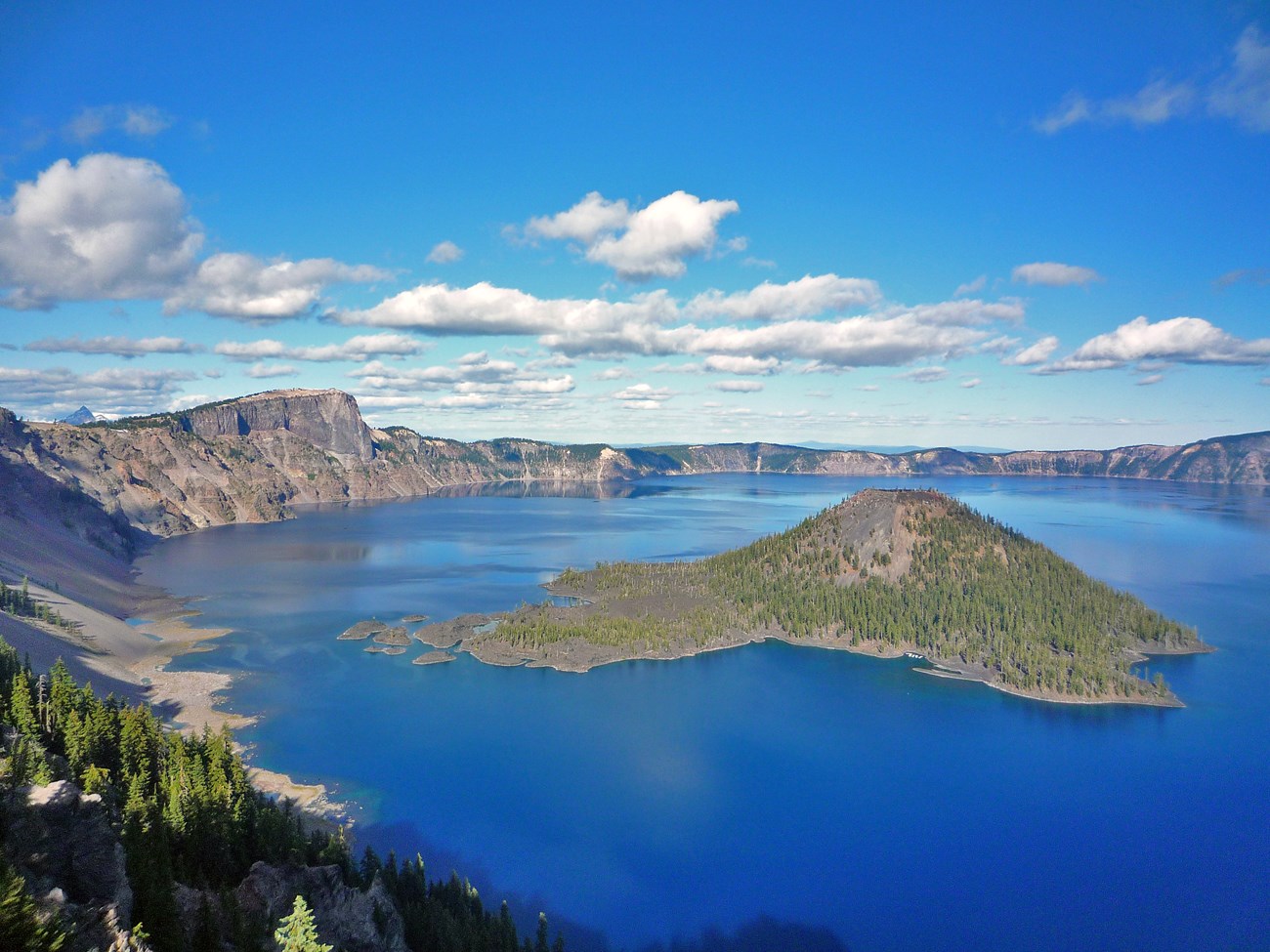
NPS
There’s a mystery in Crater Lake, the namesake of Crater Lake National Park in southwestern Oregon. Crystal-clear water reflects the blue Cascades sky and a halo of green forest. Its clarity is due to the lack of nutrients that would normally feed algae and plants. Scientists call clear-water lakes like this “oligotrophic.” They’re pretty to look at, and they’re great for swimming.
But deep under the surface, far from our view, is abundant plant life that has attracted the attention of Dr. Kathleen Page, a recently retired microbiologist from Southern Oregon University. Her research has been a quest to figure out these cold-water plants, the bacteria and other microorganisms that live among them, and the chemistry of nitrogen that ties them all together.
As a science educator and ecologist with a fondness for lakes (I grew up in watery Minnesota), I jumped at the chance to talk with Dr. Page. I was interested to hear her story of being a scientist—of combining fieldwork, lab work, botany, microbiology, chemistry, adventure, logic, and creativity to understand a little-known corner of our world. We talked about her research, what she hopes the next generation of scientists will study in Crater Lake, and her thoughts on the nature of science.
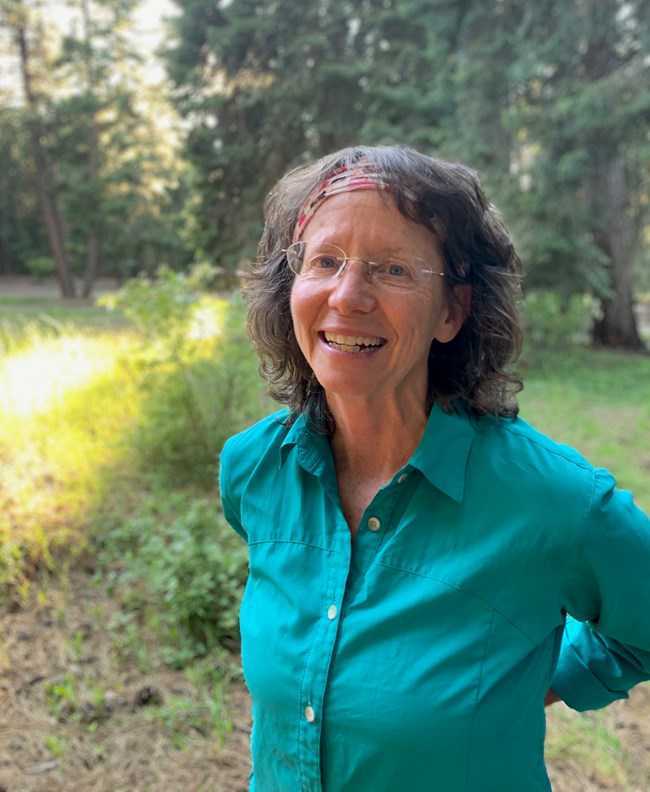
Crater Lake has a hidden garden below the surface. What’s it like?
It's primarily one species of moss called Drepranocladus aduncus, although there are some other mosses and some liverworts. It grows from about 30 meters (98 feet) down to about 100 meters (328 feet) down. And it only has about 1 percent of the light that you see at the surface. They've had scuba divers go down there. They have lights to see what's going on. One percent of normal light seems really dark to us.
You wrote that all this moss presents a puzzle. How so?
The moss represents the greatest amount of biomass in the lake. But we know that Crater Lake is very nutrient-limited. It has very low concentrations of dissolved nitrate, less than a microgram per liter. So, wow—how is it that so many plants are able to grow in this really nutrient-poor environment? That's the puzzle.
When you started to look at this puzzle, what did scientists know and agree on? And what did they not know?
It was known that underwater mosses exist in almost all deep-water mountain lakes that are oligotrophic, like Lake Tahoe, Crater Lake, probably Lake Baikal in Russia. There are several in Canada also and around southern Oregon. They're there, but because they are hidden I think they get less study.
One thing that is studied a lot are terrestrial mosses in the Arctic, where there are not a lot of nutrients in the soil. Scientists found the mosses had these symbiotic bacteria—cyanobacteria— that can take nitrogen from the air and convert it into nitrate. The mosses are dependent on cyanobacteria for this lush growth, and they literally carpet the forest floor.
But there’d been this question regarding the deep-water mosses—are they doing that same kind of thing? Are they in symbiotic association with microorganisms that allow them to grow abundantly in an area where there's low nutrients?
I vaguely remember the nitrogen cycle from an ecology course decades ago. I guess I could use a refresher.
Most nitrogen is present as nitrogen gas (N2) in our atmosphere. And it dissolves in lake water. Animals and plants can't use that form of nitrogen, so we depend on organisms like bacteria that take nitrogen gas and convert it to ammonia (NH3). And then the ammonia gets further converted into nitrate (NO3). Both ammonia and nitrate can be used by plants, but most prefer nitrate. It's essential for organisms to grow. After nitrate has been assimilated into a cell, the nitrogen gets incorporated into our proteins and our DNA and so it becomes part of our bodies.
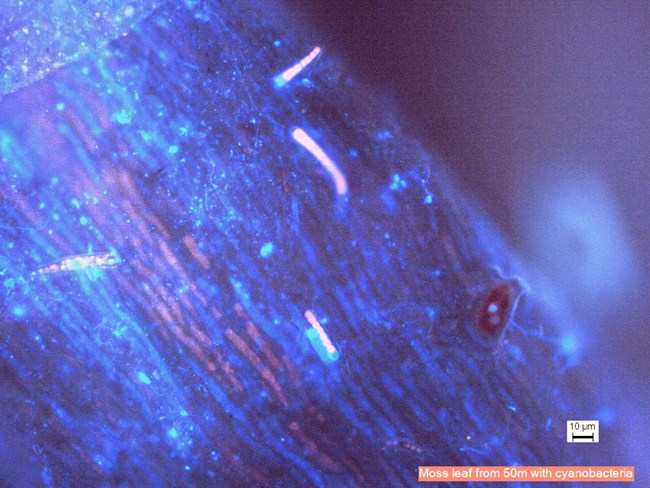
Kathleen Page
So to solve the puzzle of the moss, you started looking at the bacteria and other microscopic organisms that grow among them?
Yes. I was looking for cyanobacteria that are endophytes—meaning they grow inside the leaves, in little grooves—because the Arctic mosses have them. I was also looking for cyanobacteria and other microscopic organisms that are epiphytes—meaning they grow on the outside of the leaf.
How did you collect them? And how did you identify them?
What worked best was hooks attached to the anchor. We dropped the anchor at various depths, dragged it along for a few yards, and then pulled it up and got a bunch of moss hanging on the hook. We bagged that up and took it back to the lab and looked at it under microscopes to identify the different organisms.
We also identified species using DNA. We determined genetic sequences from our samples and compared them to published sequences of known organisms. We used two different genes. One was associated with ribosomes [structures found inside cells], which gave really good insight into the exact algae and fungi that were there. And for the bacteria, we used the nif gene which is a nitrogen fixation gene. This allowed us to focus our genetic analysis to nitrogen-fixing bacteria.
- Duration:
- 42 seconds
Researchers haul up moss from Crater Lake.
What did you find?
Well, it was amazing. On the boat we found mites, nematode worms, copepods, and visible algae filaments. And there were these gelatinous balls—most of them about a half a centimeter or so in diameter. And I'm like “Oh my goodness, that must be Nostoc” because a lot of times cyanobacteria grow in these little spherical capsules. So even with only a hand lens on the boat, you can see there's a tremendous amount of life.
Then taking the sample back to the lab and looking under high magnification, of course you see so much more. So many diatoms, and different kinds of algae, and lots of protozoa swimming all around. The moss is rich in microbial life. With genetic sequences, we identified bacteria, including nitrogen-fixing cyanobacteria like Nostoc and Calothrix growing on the outside of leaves. But we didn’t see evidence of bacteria growing inside the leaves.
Normally you take a sample of water from Crater Lake and it’s like “Whoa, where are all the microbes we usually find in lake water?” It's very clean. The bacteria aren’t in the water column. But then when you go right by the moss, the community is different. It's this amazing ecosystem that's being supported by the moss.
You found bacteria that produce nitrate. Do you know that the moss actually gets nitrate from those bacteria? What would the experiment be to test that?
I can't say that for sure, especially in an aquatic environment, because the nitrate may be diffusing away. In the terrestrial mosses, they've proven the transfer of nitrate from cyanobacteria to leaf by nitrogen tracing. They have the whole system with a radioactive isotope of nitrogen gas. After a while they can detect the radioactive nitrogen showing up as nitrate produced by cyanobacteria. And the radioactive nitrate is observed inside the plant leaves. But in an aquatic environment, you don't know. It's pretty hard to prove unless you set up in the lab where you had aquatic moss growing with cyanobacteria and you did that same sort of tracer study. Technically, you could probably do that. I was able to grow Crater Lake moss at least temporarily in test tubes in my lab and I had various kinds of cyanobacteria growing on it.
So the moss probably benefits from the bacteria. Do the bacteria benefit from the moss?
Well, it's a substrate for them. They sit on it. It keeps them at a certain location in the water column where they want to be, where there's the right amount of light. Cyanobacteria don't want too much sun, and UV light paradoxically hurts them.
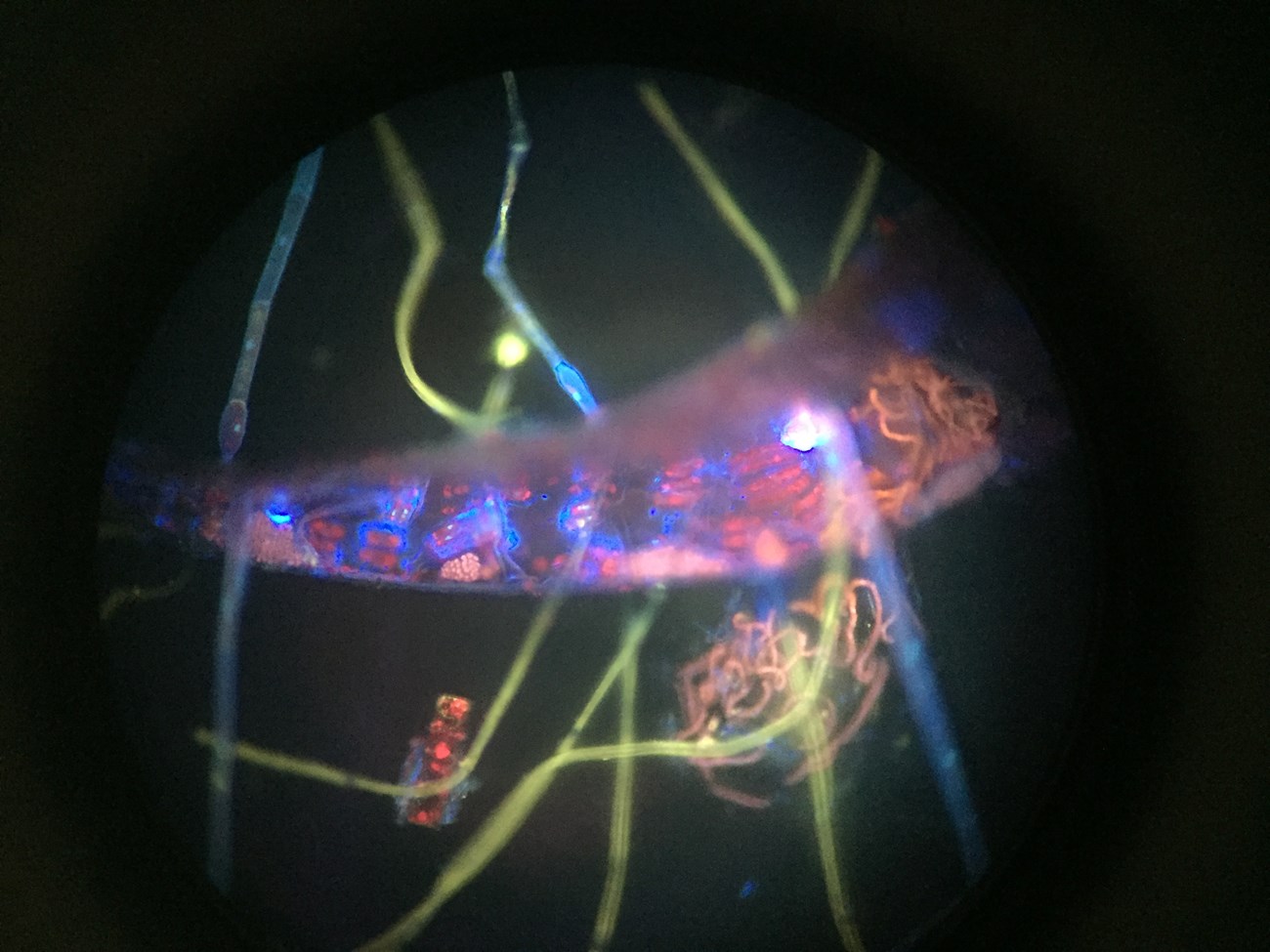
Kathleen Page
You wrote in a report about using a WaterPik flosser to remove epiphytes from moss. That’s not typical research equipment. Should we think of science as a creative endeavor?
If I got too much of the leaf in my samples, I'd be sequencing a lot of leaf DNA that I didn't want. I'd read about how people were studying aquatic mosses and they would say “high-pressure stream of water” and I'm thinking well, how am I going to get a high-pressure stream of water? The WaterPik seemed like a good way.
But yeah, creativity is essential in science. Unless you're creative, you can't think of a new way to solve a problem. Scientific research is all about problem-solving, thinking of the best methods to get an answer that you haven't been able to get before.
Do you have any favorite adventures from the field?
They say there’s this “Old Man in the Lake.” It's a log that has been in Crater Lake for a hundred years. And it has the face of a man. And a lot of people think it's a myth because no one ever sees it, but we actually saw it. We were in the boat and here the log comes up and sure enough, there's a face of a man on it.
That sounds creepy.
Yeah. You find it randomly. You don't know where it's going to be.
You’ve done both field work and lab work. Are they rewarding in different ways?
What drew me to research at Crater Lake is the fact that I live not too far from it. I visit often non-scientifically just to hike around and take in the beauty of the national park, especially the lake. But to be able to get on the boat and participate in lake research is thrilling. Really, it doesn't just draw tourists in. It draws scientists in. We love to go out there.
I was trained as a lab scientist. I love getting DNA sequences off the sequencer and right away I rush to analyze it. “What is it? What is it?” you know, to identify things. It's a great puzzle to solve. There's more tedium involved in the lab work, but both sides of that research process are interesting to me. But I do think that the field work is the most exciting, and maybe it sparks the most curiosity about things.
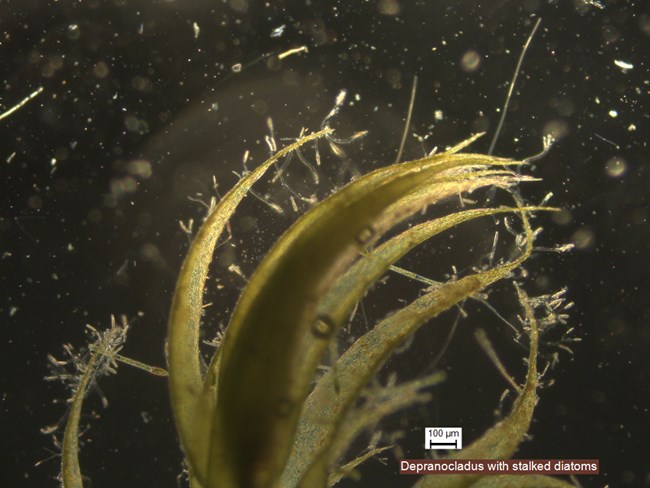
Kathleen Page
Science is rooted in curiosity and wonder. Where do you think your curiosity and wonder comes from?
I think a lot of what fostered my sense of scientific curiosity was just learning some basic things. When I was in high school and I found out that we were all made of atoms and molecules, my chemistry teacher said, “You know, we're made of star dust.” What? What are you talking about? And it was eye-opening to me to realize that we're all made of the same atoms and molecules and that chemistry is always transforming us.
I think when I found that out, I started looking at the world differently, and I wanted to know everything. I wanted to know how I was related to plants, and I wanted to know what all these microorganisms were, and it increased my fascination and curiosity about the world. I think everyone has a lot of curiosity. We’re born curious beings, but having a little bit of education, especially some basic science education, can really spark this greater curiosity and this desire to find out more.
What do you hope young scientists coming up behind you will explore about this garden?
We don't know where the new growth is and where the dying moss is. But it would be really good to know that because one idea is that maybe the new moss has to grow on the old dying moss and that might be a source of nutrient for it. Is moss always living on dead moss? And what parts of the lake are supporting more new moss growth? Does it grow better deeper or does it grow better in more shallow water? A lot of things like that. If you had a video camera that you could drop using the winch you could get a video of the moss fields.
You just have to go out and you will find things that will lead you down an exciting path where you just say “Wow, here's a new thing I should study, and here's another thing.” One thing always leads to the next when you start studying biology, and you'll find a myriad of different projects and interesting organisms that you could research.
You've revealed a lot of biodiversity in a hidden part of the world. What do you want people to know about that scientific quest?
On a big overarching level there's a lot out there that we don't know. Crater Lake is a beautiful place and it's a mysterious place. Like a lot of areas on Earth, there's a lot of mystery in there. It's amazing and fascinating to probe those mysteries.
Written by Tim Watkins, the Science Access and Engagement Coordinator for the National Park Service, based in Washington, DC. He taught college biology and did field and laboratory research on tadpoles for many years, and has a passion for helping people see science as an accessible human endeavor full of interesting stories.
